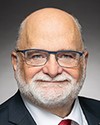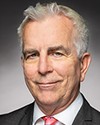Thank you, Mr. Chair, for the opportunity to update the committee on the Public Health Agency of Canada's efforts to respond to the novel coronavirus, COVID-19, in Canada. A lot has happened since the last briefing on February 5.
As you are aware, things continue to evolve globally in terms of the spread of illness and response efforts. There are now more than 80,000 confirmed cases globally and more than 2,500 deaths worldwide. Although China remains the epicentre of the outbreak, accounting for 97% of cases and the majority of deaths related to COVID-19, the spread of the virus is now occurring at the community level in several countries, and that is concerning.
To date, Canada has 12 confirmed cases: seven in British Columbia and five in Ontario. The three most recent cases—two in British Columbia and one in Ontario—are different from the others thus far in that there is no connection with travel to China. Rather, they are linked to travel to Iran. Despite the increase in global cases and the fact that there are more confirmed cases in Canada in recent days, the risk of the virus spreading in Canada remains low for the time being.
Prudence and planning are important, though, as it is impossible to know the exact trajectory that the outbreak will take. That is why, as we continue to monitor the situation and learn more about the spread of this virus, we are also planning for all possible scenarios and basing our response on evidence and science.
We continue to believe that Canada's public health system is well equipped to contain cases coming from abroad, which will limit the potential for their spreading within Canada. Our system is working as it should to protect Canadians against this novel coronavirus. We are ready to respond should we find ourselves in the midst of a global pandemic.
We are acting now to ensure that we can shift our approach quickly if necessary from delaying spread as long as possible to pandemic preparedness and response. The Public Health Agency of Canada is working collaboratively with partners at all levels of government to respond to COVID-19 and to plan and prepare and adapt our response to this rapidly changing situation.
We continue to adjust our border measures as the international situation evolves, ensuring individuals have the information they need to protect themselves and their fellow Canadians.
We continue to ask travellers arriving from Hubei province to go into voluntary isolation and travellers arriving from China to monitor their health for signs of symptoms. These individuals are given documents with essential information and instructions in airports. The information tells them what to do should they develop symptoms.
General information is provided in all airports, and a general document is handed out to all travellers arriving from other countries. They are asked to monitor their health for the development of symptoms related to the COVID-19 virus and to contact a local public health authority should they develop symptoms.
This information is also available on Canada.ca/coronavirus, along with the latest travel health advisories on travel.gc.ca, so that all travellers prior to departure and upon returning to Canada can stay informed and know what to expect.
This includes, for example, updated travel health notices for affected areas such as South Korea, Iran, Italy, Hong Kong, Japan and Singapore. As the cruise ship season opens in April in Canada, the Public Health Agency of Canada will be proactively engaging with operators to reinforce obligations under the Quarantine Act and provide public health travel advice to cruise ship passengers on infection prevention and control and on what measures they can take if they become sick. We have also assisted Canadians in returning to Canada from highly affected areas.
To date, Canada has chartered three flights to bring people back from Hubei province, China, as well as individuals aboard the Diamond Princess cruise ship that was docked in Japan.
I'm pleased to announce that everyone in quarantine at Canadian Forces Base Trenton has now been released.
All the individuals in quarantine remained in isolation for a period of 14 days. They pose no risk to others and can resume their normal activities.
We worked with provincial and territorial partners, as well as local public health authorities and non-governmental organizations, to ensure that social services were in place to support these Canadians and their family members after they left CFB Trenton. Repatriated Canadians from the Diamond Princess cruise ship remain in quarantine at the Nav Centre in Cornwall, Ontario, where they continue to receive the same regular health assessment and mental health supports as those who were under quarantine at CFB Trenton.
To date, four individuals have reported symptoms similar to COVID-19. Samples from all four individuals have been tested and confirmed negative. We will continue to provide updates to the community and all Canadians regarding these repatriation efforts and the health and safety of our fellow Canadians during their stay at the Nav Centre.
As we look to the future, we are concerned by recent developments in the world, which underscore the importance of examining when and how we adjust our approach.
Now, I'd like to tell you about our broader approach, which is aimed at reducing the spread and impact of the virus in Canada.
When it comes to the Government of Canada's response, there are three phases: containment, delay and preparation, and mitigation. While Canada's enhanced border measures and ability to detect, treat and, through isolation and quarantine, limit the spread of COVID-19 have been effective to date, it is prudent for Canada to ramp up planning and preparations to be ready for all potential outcomes, including the possibility of a more widespread outbreak. This means shifting to a containment-and-delay phase. This does not mean that we currently think the risk to Canadians has changed. As I mentioned earlier, the risk within Canada remains low at this time.
However, our efforts now need to focus on getting the health care system, communities and families ready to deal with the virus and its continued spread in Canada.
This shift in our planning and response effort is part of Canada's existing framework to manage public health events as they evolve.
This is not a new approach. Its foundation is in our planning and preparation for pandemic outbreaks that we're constantly working on with partners from all levels of government. The “Federal/Provincial/Territorial Public Health Response Plan for Biological Events” and “Canadian Pandemic Influenza Preparedness: Planning Guidance for the Health Sector”, for example, serve as anchors in coordinating our domestic planning and response. These plans were tested during our response to H1N1, and they were effective.
However, we recognize that every event is different, and we must be ready for a variety of scenarios. We also recognize that it takes more than governments and the health sector to protect the health and safety of Canadians.
Now is the time for all Canadians to really think about getting prepared to cope with a general outbreak in the community. Everyone—from individuals, families and communities to schools, employers and operators of essential infrastructure—has a role to play in preparing for the potential spread of COVID-19 at a broader level.
In the event of widespread illness, it will be especially important that individuals continue to take actions to stay healthy and prevent the spread of respiratory infections, including washing their hands frequently, coughing into a sleeve or tissue and staying home when sick.
Being prepared also means staying informed. For the latest and most up-to-date information, Canadians should visit Canada.ca/coronavirus or call our toll-free phone line at 1-833-784-4397 to get answers to questions about COVID-19.
As the situation evolves and the Public Health Agency of Canada adapts its response accordingly, we are committed to providing updates and information as soon as they become available.
We are working vigilantly with our partners across Canada to ensure that the Government of Canada's response is comprehensive and effective, including being prepared for the possibility of a pandemic in the coming weeks and months.
We would be pleased to answer your questions.




